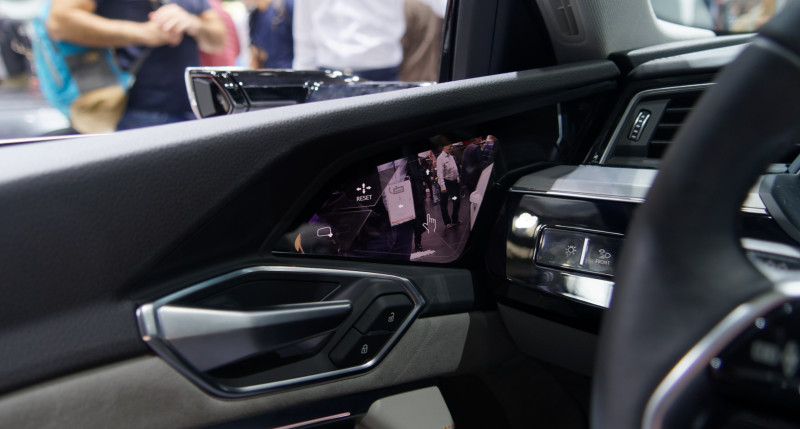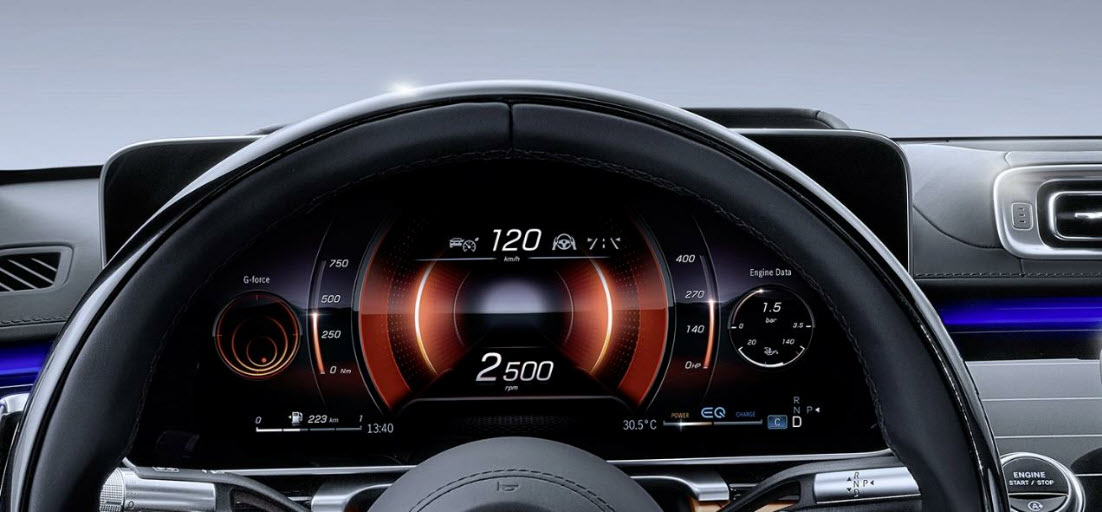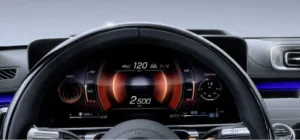
Of course, the display was a simple passive matrix OLED (for fuel level, if I remember correctly!) and the one I added was a colour passive display in a Pioneer stereo. I kept the car for a long time (and my son-in-law still drives it!) as I hardly used it apart from driving to and from airports. During the time I had the car, the OLED clearly declined in brightness.
Although the electronic display business talks about product life times of 20,000 hours plus for many applications, the reality of consumer automotive applications is that the life is only around 5,000 hours. If we assumed an average (when moving) speed of just 25mph/40kph, we would have a distance travelled of 125K miles/200K kilometres. Despite the relatively short lifetimes, it has been a challenge for OLEDs to meet the qualification requirements of automotive makers. The key reasons include:
- High brightness needed in high ambient light conditions, which can cause burn-in
- Often static images that add to the problems of burn-in
- Wide temperature ranges, with high temperatures further adding to burn-in (hence the attention to cooling on OLEDs for TV applications).
On the other hand, OLEDs are a very attractive proposition for auto makers because of the deep blacks, relative ease of making curved displays and potential for flexible substrates, good colour, speed and viewing angles.
It has taken a long time to get full colour OLEDs into cars. Audi used some OLEDs for showing images from rear-facing cameras, designed to replace mirrors, but only in some countries. This is basically a video application and video is less of a problem for OLEDs because the continuous variation in image tends to spread the degradation of the image over time over the whole surface, making burn-in much less visible.
 I took this shot at the Paris Motor Show in 2018 – happy days! Image:Meko
I took this shot at the Paris Motor Show in 2018 – happy days! Image:Meko
OLEDs Arrived in 2020
So it has been a big deal that Mercedes announced that its latest MBUX Hyperscreen technology in its “S” class cars has two OLEDs in the centre and passenger displays. The Cadillac 2021 Escalade also has a LG Display OLED (and supplying these two brands has given LG Display a 92.5% share of the market for OLEDs in the automotive segment in 2020 according to figures from Omdia quoted in the Korean press recently).
All this excitement about OLEDs, though, has somewhat distracted attention away from another key aspect of the Mercedes solution. The full Hyperscreen system has five displays and the main driver’s display is very innovative, although it is an LCD rather than an OLED. The display is a 12.3″ device in an 8:3 aspect ratio and with 2D resolution of 2400 x 900. However, the display has a clever trick up its sleeve – it can be switched to a 3D mode that is autostereoscopic – which is to say that you can see the 3D effect without glasses.
 The Mercedes Autostereoscopic display
The Mercedes Autostereoscopic display
The Sweet Spot
Autostereo can give a really good effect, but usually there is a ‘sweet spot’ at a particular depth from the display, especially if there are fixed lenses on the display diverting the images to each eye. In a car that’s not a good idea as people vary a lot in size and shape and their distance from the instrument panel. Mercedes gets around this by using a display that can adjust the ‘sweet spot’ based on data from cameras in the car that monitor the driver (and have other applications, but that’s outside the scope of this article). The camera used for head and eye tracking can detect the position in 3D space to work out the optimum way to display the 3D image. The driver can be between 500 and 900mm from the display in a 15 deg cone.
The display uses an RGBW pixel configuration that allows each pixel to be split into a left and right hand view, with a high resolution monochrome (TN) LCD used as a barrier to control the precise view. The barrier layer has 14 sub-pixels and variable barrier pitch to allow optimum adjustment to the driver’s head position. The display also has an optimised colour filter to minimise crosstalk issues between the images (it’s <2%) as well as giving good uniformity.
Brightness is halved in the 3D mode but is still 600 cd/m² (and is adaptively controlled). The backlight is dynamic and uses 48 illumination zones.
Mercedes did a lot of user testing to really understand the issues in depth perception, for example when there were fast head movements. The company also made the most of the substantial processing power in the car’s electronics for image optimisation.
The display was developed with LG Display and Melco Display Technology Inc (part of Mitsubishi Electric and which is due to shut down its LCD fab in 2022).


